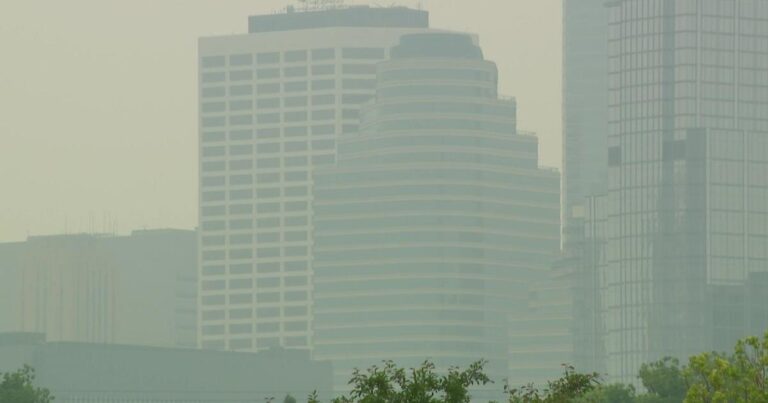The smoke from Canadian wildfires continues to impact the United States as parts of the Midwest struggle with historic air quality index, or AQI, readings.
In Minnesota's Twin Cities, the AQI was the worst since the Minnesota Pollution Control Agency began keeping records in 1980. On Wednesday, the area had the worst air quality in the nation, CBS Minnesota reported.
The state agency said on Twitter Wednesday night that the 24-hour AQI will be around 175, which is considered unhealthy for the general public. The AQI runs on a scale of 0 to 500, with anything below 50 considered “good”.
With observations at 21:00 we believe this is the highest AQI observed in the Twin Cities. Records start in 1980. There are still a few hours of data left – but it looks like the Twin Cities will end up with a 24-hour AQI of around 175 (85 µg/m3). #AQI #mnwx
— MN Air Quality Index (@mpca_aqi) June 15, 2023
Northern and central Minnesota remain under an air quality alert through Friday morning. The rest of the state is under a similar warning until Thursday night, according to CBS Minnesota.
Much of the country has been dealing with air quality issues in recent weeks as smoke from Canada's wildfires swirls in the atmosphere. Earlier in June, parts of the East Coast, incl New Yorksaw high AQI readings in the 400s. High numbers are considered dangerous, and people were advised to stay indoors as much as possible and wear high-quality masks for any necessary outdoor activity.
The East Coast is likely to experience air quality issues again in the coming days, the The Weather Channel reported on Thursday.
“What's going to happen over the next few days is we're going to start to see a change in the pattern that's going to bring the smoke a little farther east,” said Weather Channel meteorologist Ari Sarsalari. The smoke will travel over the Great Lakes, he said, before reaching the coast, especially in the North Atlantic region, likely Friday through Saturday.
It's unclear how severe the effects will be, he said, but there will likely be noticeable air quality problems, especially for people who have breathing problems.
“Now, how thick is the smoke going to be? It's a little hard to say,” Sarsalari said. “But I can say with certainty that New York is not going to look like Mars, like it did a long time ago, at least that day.”

